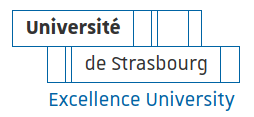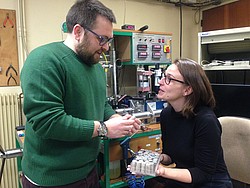Hydrothermal alteration, a clue to a better understanding of volcanic eruptions
Stratovolcanoes, like Vesuvius, are among the most dangerous in the world. Two mineral physics experts from the Institut de physique du globe de Strasbourg (Strasbourg Institute of Earth Physics – IPGS), Michael Heap and Alexandra Kushnir, studied hydrothermal alteration, a phenomenon that can reduce the permeability of lava domes and thus lead to explosive volcanic activity. The multidisciplinary study of the Indonesian volcano, Mount Merapi, appeared in the magazine, Nature Communications.
Stratovolcanoes can erupt in two ways: effusive eruptions, where the magma flows steadily from the volcanic pipe, and explosive eruptions, which are far more dangerous and produce pyroclastic flows of hot gases that can spread as far as 10 kilometres from the volcano. “Our aim was to gain a better understanding of the causes of this second type of eruption”, explains Alexandra Kushnir, who, along with her colleagues, focused on a specific factor: hydrothermal alteration.
Six samples collected
“Between eruptions, hot volcanic gases continue to circulate under the surface and alter the rocks with which they come into contact. This alteration is often manifested by the deposition of sulphate minerals that obstruct pores and fractures in the rock.” To test whether this fact alone could cause pressure under the dome to increase and lead to an explosion, a team of researchers went to Mount Merapi during a calm period to collect six samples of different rocks.
These were sent to our two IPGS researchers, who were in charge of analysing the physical properties of the rocks. “We determined the permeability and the porosity of the rocks in the laboratory. We noticed that the altered samples were 10 000 times less permeable than the non-altered ones.” The researchers then broke up the rocks and re-measured their permeability in order to understand how it is affected by the fractures.
“Another parameter in our toolbox”
In order to reproduce the reality of volcanoes, the researchers then modelled the permeability of the dome in the case of non-altered rocks, 50% altered rocks and highly altered rocks with 99%-sealed fractures. “Could this create excessive pressure and lead to an explosion? The answer is yes.”
The researchers therefore concluded that if hydrothermal alteration occurs, pressure is more likely to increase and lead to an eruption that is more explosive than effusive. In volcano monitoring, geophysical methods make it possible to detect these types of alterations. “One suggestion would be to see how to include these alterations in the monitoring of stratovolcanoes in order to better anticipate explosive events.” But we cannot talk about prediction: “It’s another parameter in our toolbox”, summarises Alexandra Kushnir.
Marion Riegert







